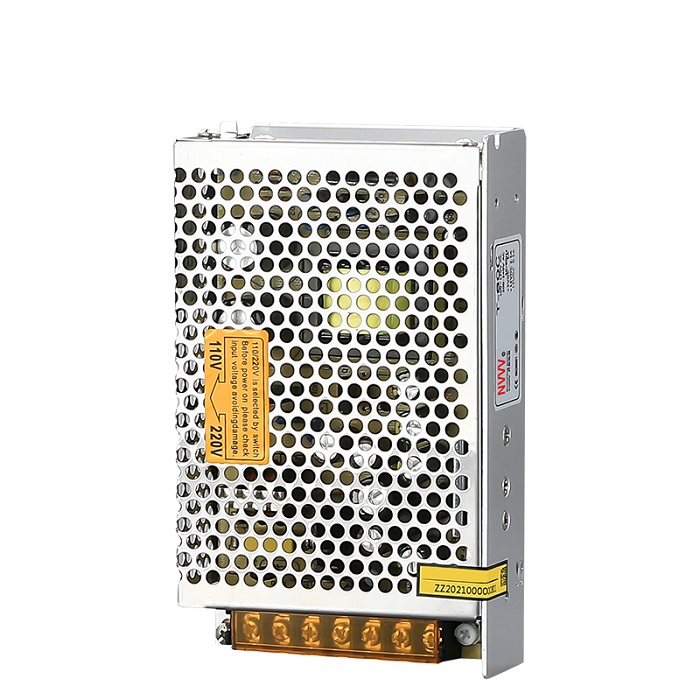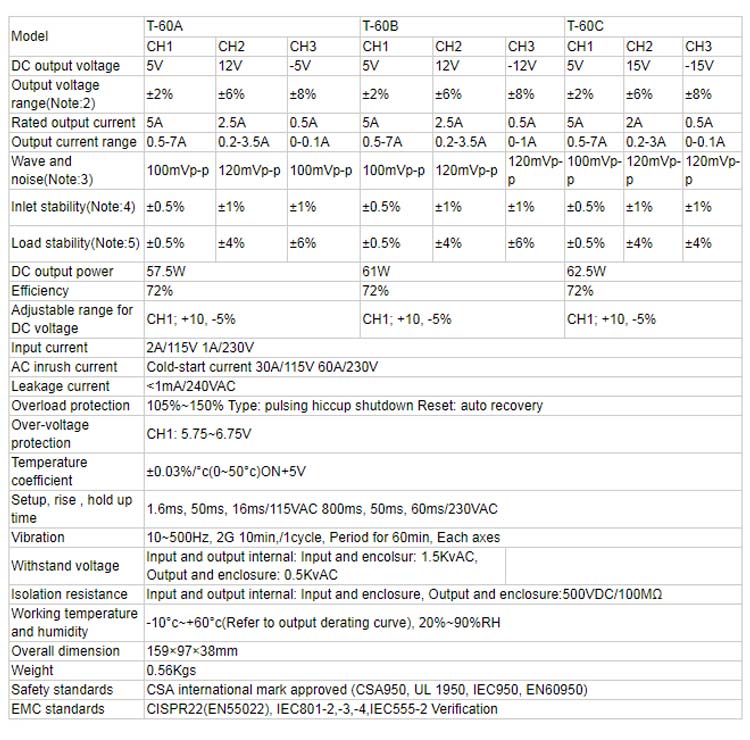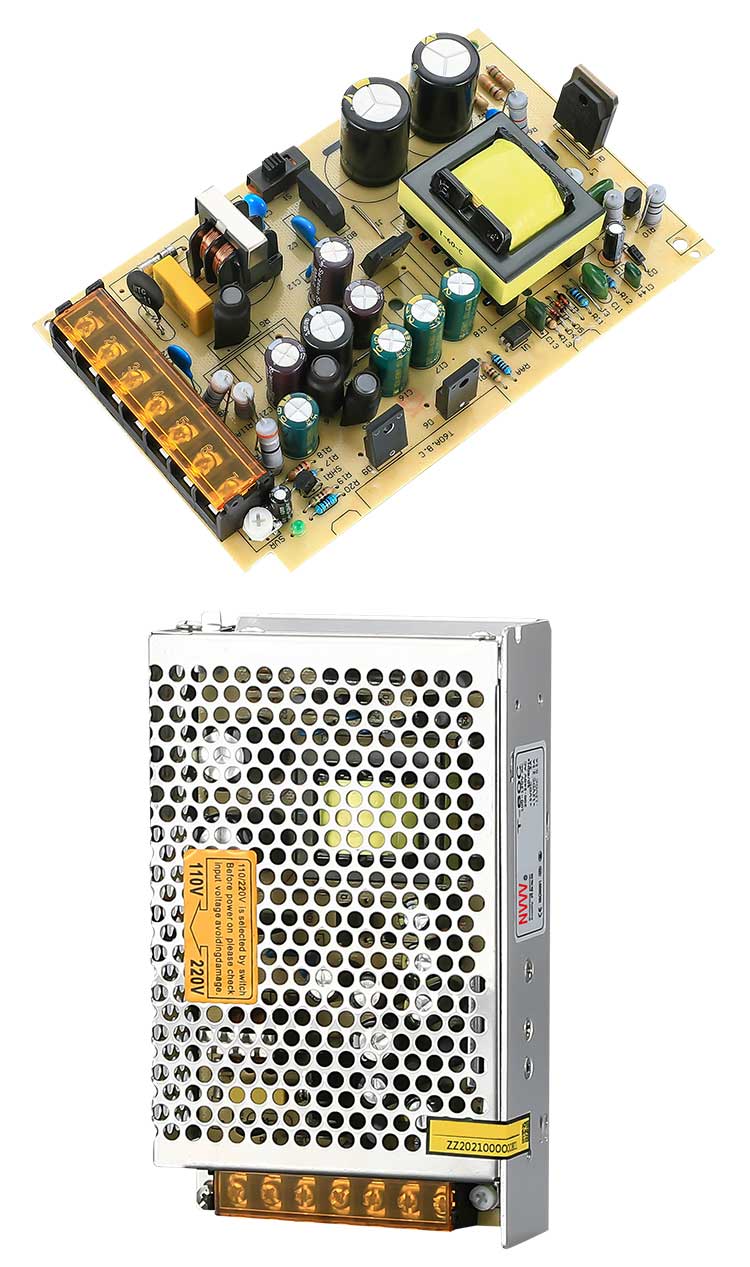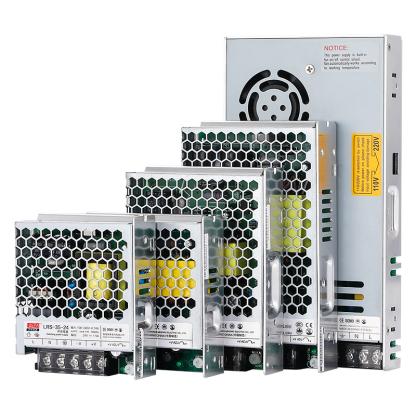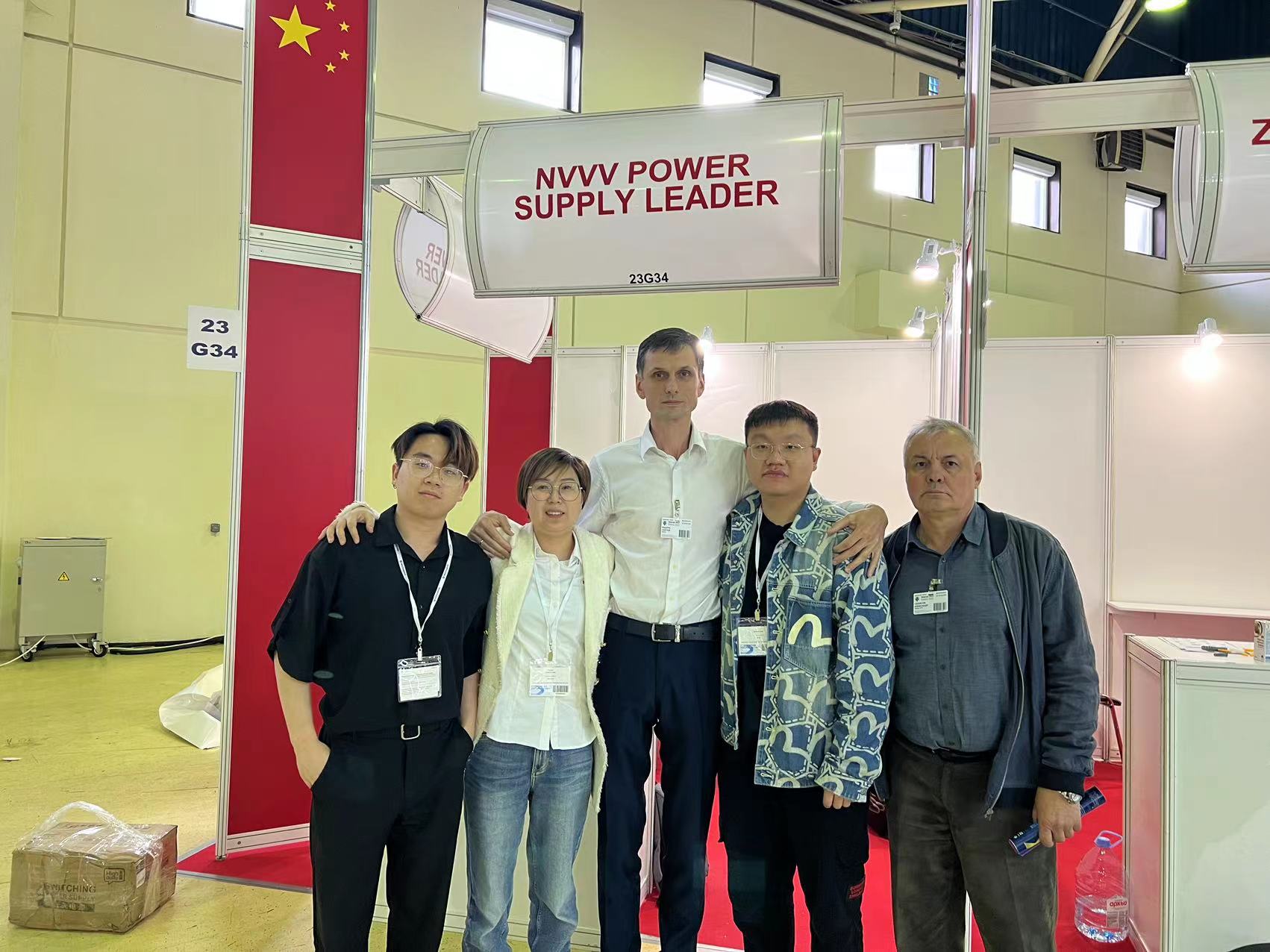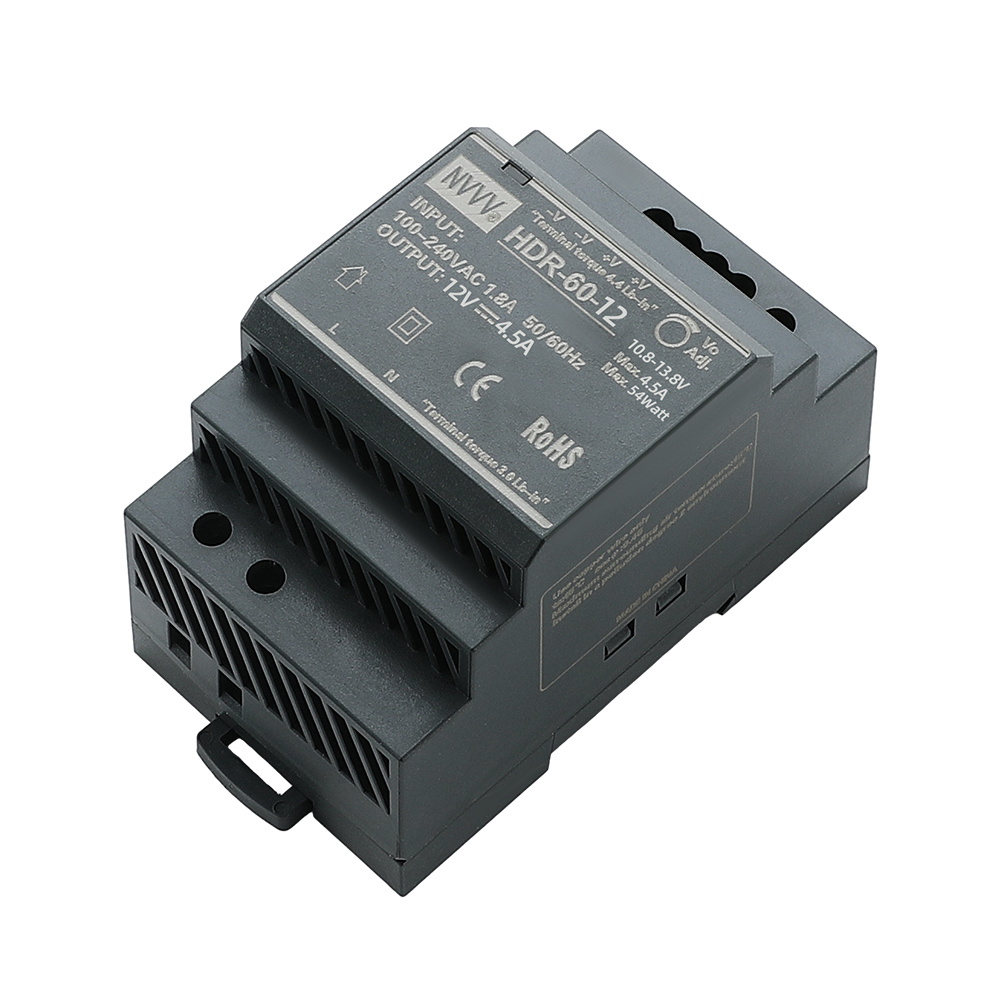Switching Power Supply for Industrial Use: Understanding, Selection, and Usage
In modern industrial applications, the stability and efficiency of power supply equipment are crucial. The Switching Power Supply (SMPS) is a highly efficient power conversion device widely used in industrial control, automation equipment, 3D printers, CNC systems, and other scenarios. Compared to traditional linear power supplies, SMPS utilizes high-frequency conversion technology to achieve higher energy efficiency while maintaining a smaller size and better heat dissipation performance, making it an ideal choice for industrial applications.
Industrial applications demand more than just efficient power conversion; they also require long-term stable operation of the equipment. For example, in production line equipment, unstable power supply can lead to operational anomalies, equipment damage, or even production shutdowns, causing significant economic losses. Similarly, in robotic automation control systems, instantaneous voltage fluctuations can directly affect motion control accuracy, impacting product quality. Therefore, selecting the right SMPS not only improves operational efficiency but also reduces maintenance costs and extends equipment lifespan.
As a professional brand in the industrial power supply sector, NVVV is dedicated to providing high-quality SMPS solutions tailored to various industrial needs. Whether you are a buyer, an engineer, or a maintenance professional, this article will guide you through Understanding, Selection, and Usage to help you find the most suitable power supply solution.
Understanding Switching Power Supply
Working Principle of SMPS
The Switched Mode Power Supply (SMPS) operates through high-frequency switching components (such as MOSFETs) and Pulse Width Modulation (PWM) technology, converting the input power into the required stable DC output. The operation process includes the following key steps:
-
AC-DC Conversion: The input AC voltage is first rectified and filtered to convert it into DC voltage.
-
DC-DC Conversion: A high-frequency switching circuit converts the DC voltage into high-frequency pulses, which are then rectified and filtered to generate a stable DC output.
-
Feedback Control: Voltage feedback from the output dynamically adjusts the pulse width to ensure stable voltage output.
Key Advantages of SMPS
The widespread application of SMPS is due to its advantages over traditional linear power supplies:
-
High Efficiency: Efficiency levels typically range from 80%-95%, significantly surpassing the 40%-60% of linear power supplies, reducing energy loss and improving power utilization.
-
Compact Size & Lightweight: The use of high-frequency transformers results in smaller size and lighter weight, making them ideal for industrial equipment with limited space.
-
Broad Adaptability: Supports a wide range of input voltages, accommodating different global power grid standards.
-
High Stability: Equipped with overcurrent, over-temperature, and short-circuit protection to ensure safe operation.
-
High Power Density: Provides greater power output within a smaller footprint, improving space efficiency in equipment.
Selection Guide: How to Choose the Right SMPS
Selecting the right switching mode power supply (SMPS) is essential to ensure optimal performance, longevity, and efficiency of industrial equipment. A well-chosen SMPS will not only enhance energy efficiency but also minimize operational risks and reduce maintenance costs. When selecting an SMPS, several key aspects should be considered, including technical specifications, environmental factors, and safety certifications.
Key Considerations When Choosing an SMPS
-
Load Requirements & Power Capacity
-
Before selecting an SMPS, determine the total power consumption of the connected devices. It is crucial to choose a power supply that provides at least 20-30% more power than the calculated requirement to accommodate potential power surges and prevent overloading.
-
Consider whether the load is dynamic or static. Some industrial machines, such as CNC equipment, experience fluctuating power demands, requiring an SMPS with sufficient buffer capacity.
-
-
Input and Output Voltage Compatibility
-
Ensure that the input voltage of the SMPS matches the available power source (e.g., AC 110V/220V or DC 12V/24V).
-
Verify that the output voltage meets the requirements of the target equipment. A mismatch can lead to inefficient performance, instability, or even damage.
-
Some applications require adjustable output voltages, so consider an SMPS with voltage tuning options for added flexibility.
-
-
Efficiency and Power Factor
-
Higher efficiency translates to lower energy waste and reduced heat generation. Look for SMPS models with efficiency ratings above 85% for industrial use.
-
A power factor (PF) above 0.9 is recommended to minimize energy loss and reduce strain on the power grid.
-
-
Environmental Conditions and Durability
-
Industrial settings often expose equipment to harsh conditions, including high temperatures, moisture, dust, and vibration.
-
Choose an SMPS with appropriate protection ratings (IP ratings) and thermal management solutions (e.g., heat sinks or forced air cooling) to ensure long-term reliability.
-
-
Certifications and Compliance
-
Ensure that the SMPS complies with industry standards such as CE, UL, RoHS, and ISO 9001 to guarantee safety, performance, and environmental compliance.
-
Check for additional certifications if the power supply is intended for specialized applications, such as medical or aerospace industries.
-
Choosing the Right Type of SMPS for Specific Applications
-
For CNC Machines and Robotics: Choose an SMPS with a high transient response and reliable overcurrent protection.
-
For 3D Printers and Automation Systems: A low-noise, high-efficiency power supply with precise voltage regulation is recommended.
-
For Industrial LED Lighting: Select an SMPS with a stable current output to prevent flickering and ensure consistent brightness.
-
For Telecommunications and Networking Equipment: Opt for an SMPS with backup power capabilities and surge protection to prevent downtime.
By carefully considering these factors, industrial users can ensure that their SMPS meets the performance requirements of their applications while minimizing risks associated with power supply failures.
Usage Tips: How to Use and Maintain SMPS
Proper Installation
Proper installation of SMPS is crucial for optimal performance and long-term reliability. Incorrect installation may lead to poor heat dissipation, short circuits, or unstable power output, affecting equipment functionality.
-
Heat Dissipation Requirements: SMPS generates heat during operation, so it must be installed in a well-ventilated environment. If space is limited, use heat sinks or forced-air cooling systems to improve heat dissipation. Avoid enclosing the power supply in a sealed case, as this can trap heat and shorten its lifespan.
-
Wiring Method: Follow the product manual strictly when connecting the power supply. Incorrect wiring may damage the power supply or cause instability in the entire system. Ensure the AC input and DC output terminals are correctly connected, with proper polarity alignment to prevent equipment damage.
-
Protective Measures: Industrial environments may have dust, humidity, or high temperatures. Take extra precautions, such as choosing IP65-rated waterproof and dustproof power supplies for humid conditions or installing cooling fans for high-temperature environments to prevent overheating and automatic shutdown.
Common Issues & Solutions
During operation, SMPS may encounter various common issues. Below are troubleshooting methods:
-
Excessive Heating?
-
Ensure the power supply is installed in a well-ventilated area to prevent heat buildup.
-
Check if the load exceeds the rated power capacity, as overloading can cause excessive heating.
-
Ensure the cooling system (fan or heat sink) is functioning properly, and consider adding extra cooling measures if necessary.
-
-
Unstable Output Voltage?
-
Check if the input voltage is stable; if not, a voltage stabilizer may be required.
-
Verify if the load fluctuates excessively. Some devices draw high inrush currents at startup, causing temporary voltage drops.
-
Inspect internal components, especially electrolytic capacitors, for aging or failure, and replace if necessary.
-
-
No Output?
-
Check that the power supply is correctly plugged in and switched on.
-
Inspect the fuse; a blown fuse may indicate overloading or a short circuit.
-
Use a multimeter to measure the input voltage to confirm power reception.
-
How to Extend Lifespan?
To ensure long-term stable operation, follow these maintenance measures:
-
Regular Dust Cleaning: Dust accumulation affects heat dissipation. Clean every 3-6 months, especially around fans and vents.
-
Maintain a Suitable Operating Environment: Avoid prolonged exposure to high temperatures, humidity, or dusty environments. The optimal operating temperature is below 50℃.
-
Avoid Frequent Power Cycling: Frequent switching on/off generates transient current surges, accelerating component aging.
-
Choose High-Quality Brands (e.g., NVVV): Reliable brands use premium components for longer lifespan and better stability.
These measures not only ensure stable operation but also extend the lifespan, reducing maintenance costs and enhancing overall system reliability.
Conclusion
As a critical component in industrial applications, choosing the right SMPS is essential. NVVV provides high-quality, high-performance power supply products to help industrial enterprises enhance production efficiency and equipment stability.
For more information, visit our website or contact us for expert advice!

